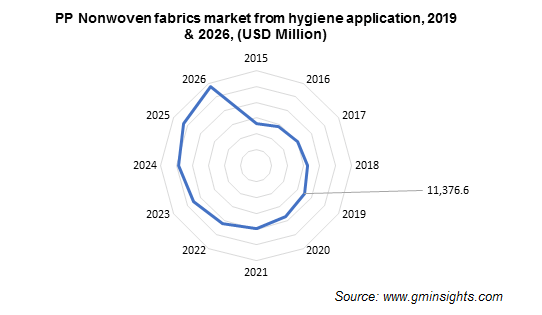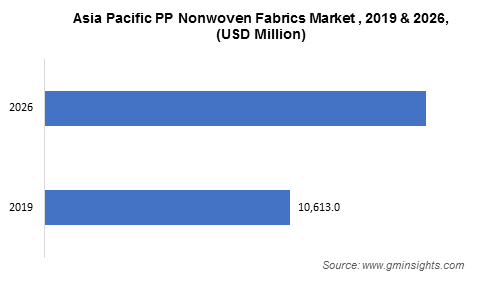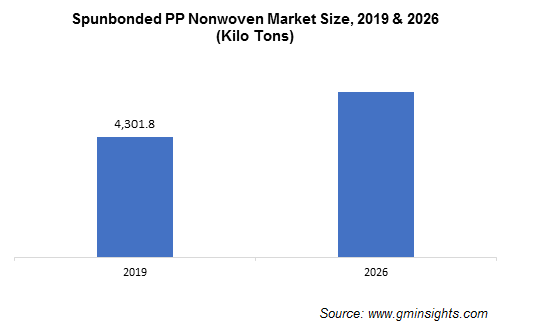Home > Chemicals & Materials > Textiles > Nonwoven Materials > Global Polypropylene (PP) Nonwoven Fabrics Market
Global Polypropylene (PP) Nonwoven Fabrics Market Analysis
- Report ID: GMI838
- Published Date: May 2020
- Report Format: PDF
Polypropylene Nonwoven Fabrics Market Analysis
Spunbonded-based PP nonwoven fabric was 4.3 million tons in 2019 and is forecast to grow at a CAGR of over 10% through 2026. Spunbonded nonwoven fabrics are produced from integration of web formation, fiber spinning, and bonding process. These are highly used in manufacturing lightweight fabrics and are considered for their cost-effectiveness and economical option to produce nonwoven fabric materials.
The widening application scope in applications including medical, hygiene, furniture, construction, automotive, geotextiles, agriculture, household, and packaging will spur global polypropylene nonwoven fabrics market.
Spunbonded nonwoven fabrics are available in various eco-friendly options including shopping bags, packing bags, carrier bags, and gift bags. The rising utilization of spunbonded fabrics in personal care and hygiene industries due to their liquid repellence, softness, and absorbent properties will boost durable and disposable polypropylene nonwoven fabrics market manufacturing.

Based on application, it is segmented into hygiene, industrial, medical, geotextiles, furniture, carpet, agriculture, and others. The polypropylene nonwoven fabrics market from hygiene application was valued at USD 11.3 Billion in 2019. Polypropylene nonwovens are used in production of hygiene-related products such as baby diapers, wet wipes, adult incontinence products, bandages & wound dressings, and feminine hygiene.
Frequent usage and demand for baby diapers and skin wipes to avoid rashes on baby’s skin are anticipated to stimulate overall product growth. Increasing infant population along with high demand for disposable products such as baby diapers and wipes from developing economies, such as India and China, will supplement the polypropylene nonwoven fabrics market demand.
Managing hygiene is important for good health, prevents various infectious diseases and promotes personal wellbeing. Leading producers of disposable diapers are keen on improving product thinness to ensure comfort among babies and infants and minimize the environmental impact of the polypropylene nonwoven fabrics market. These disposable diapers are developing highly absorbent cores engineered with high levels of superabsorbent polymers, thereby decreasing bulkier material levels.

The Asia Pacific was valued at USD 10.6 billion in 2019 and is anticipated to exceed 12% growth rate during the estimated timeframe. Most of the Asian countries are still at the preliminary stage in marketing adult incontinence products, escalating industry growth soon. Growing urinary incontinence products demand among adults and unwillingness to go through intrusive procedures will further drive the polypropylene nonwoven fabrics market value.
According to the Australian Institute of Health and Welfare, urinary incontinence affects 37% of women and 13% of men in Australia. Most of the consumers in India are not aware of adult incontinence products. The main reason is lack of promotional activities and advertisements by various brands. Additionally, limited availability of these products in India compared to other hygiene products is likely to restrict adult incontinence in the polypropylene nonwoven fabrics market.

